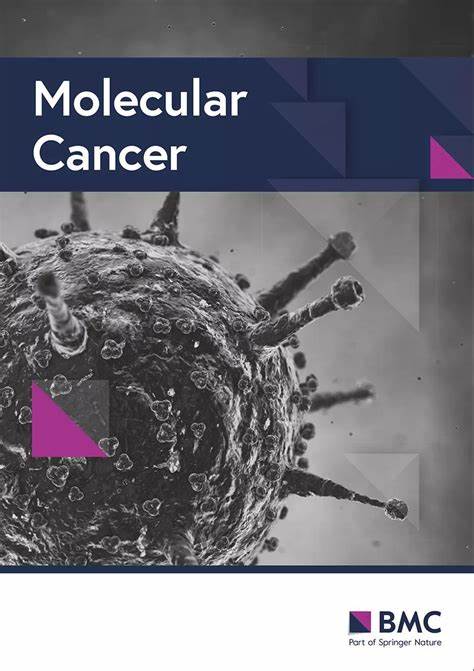Enhancing radiotherapy-induced anti-tumor immunity via nanoparticle-mediated STING agonist synergy
IF 33.9
1区 医学
Q1 BIOCHEMISTRY & MOLECULAR BIOLOGY
引用次数: 0
Abstract
Radiotherapy (RT) remains a cornerstone treatment for over 50% of cancer patients, primarily via ionizing radiation-induced DNA damage to exert therapeutic effects. Notably, emerging studies have revealed its additional capacity to activate systemic anti-tumor immune responses through inducing immunogenic cell death (ICD) and activating the cGAS-STING pathway, further expanding its therapeutic potential. However, its efficacy is often limited by immunosuppressive tumor microenvironment (TME). Additionally, while RT can activate the cGAS-STING pathway, this activation remains transient and suboptimal, failing to sustain robust anti-tumor immunity. Therefore, combining RT with STING agonists may benefit traditional therapy by amplifing tumor immunogenicity and counteracting immune evasion. Despite promising results, challenges such as off-target toxicity, poor cell membrane permeability and poor bioavailability, remain obstacles to clinical translation of conventional STING agonists. Nanomedicine offers a promising approach by enabling targeted delivery of STING agonists and amplifying RT-induced DNA damage through nanoscale radiosensitizers. In this review, we provide a detailed discussion of the immune-stimulatory and immune-suppressive effects of RT, as well as the mechanisms and biological effects of selectively activating the cGAS-STING pathway in key TME components. On this basis, we further explore recent advancements in nano-STING agonists-mediated anti-tumor immunity in synergy with RT. This combinatorial approach achieves dual radiosensitization and immunostimulation, ultimately driving immune memory formation and TME reprogramming. Finally, the application prospects and challenges of nano-STING agonists-based immunotherapy are also discussed from the perspective of clinical translation.通过纳米颗粒介导的STING激动剂协同作用增强放疗诱导的抗肿瘤免疫
放疗(RT)仍然是超过50%的癌症患者的基础治疗,主要是通过电离辐射诱导的DNA损伤来发挥治疗效果。值得注意的是,新兴研究揭示了其通过诱导免疫原性细胞死亡(ICD)和激活cGAS-STING通路激活全身抗肿瘤免疫应答的额外能力,进一步扩大了其治疗潜力。然而,其疗效往往受到免疫抑制肿瘤微环境(TME)的限制。此外,虽然RT可以激活cGAS-STING通路,但这种激活仍然是短暂的和次优的,无法维持强大的抗肿瘤免疫。因此,RT联合STING激动剂可能通过增强肿瘤免疫原性和对抗免疫逃避而使传统治疗受益。尽管取得了令人鼓舞的结果,但脱靶毒性、细胞膜渗透性差和生物利用度差等挑战仍然是传统STING激动剂临床转化的障碍。纳米医学提供了一种很有前途的方法,可以通过纳米级放射增敏剂靶向递送STING激动剂和放大rt诱导的DNA损伤。在这篇综述中,我们详细讨论了RT的免疫刺激和免疫抑制作用,以及选择性激活关键TME组分中的cGAS-STING通路的机制和生物学效应。在此基础上,我们进一步探索纳米sting激动剂介导的与rt协同抗肿瘤免疫的最新进展。这种组合方法实现了双重放射增敏和免疫刺激,最终驱动免疫记忆形成和TME重编程。最后,从临床转化的角度探讨了基于纳米sting激动剂的免疫治疗的应用前景和面临的挑战。
本文章由计算机程序翻译,如有差异,请以英文原文为准。
求助全文
约1分钟内获得全文
求助全文
来源期刊

Molecular Cancer
医学-生化与分子生物学
CiteScore
54.90
自引率
2.70%
发文量
224
审稿时长
2 months
期刊介绍:
Molecular Cancer is a platform that encourages the exchange of ideas and discoveries in the field of cancer research, particularly focusing on the molecular aspects. Our goal is to facilitate discussions and provide insights into various areas of cancer and related biomedical science. We welcome articles from basic, translational, and clinical research that contribute to the advancement of understanding, prevention, diagnosis, and treatment of cancer.
The scope of topics covered in Molecular Cancer is diverse and inclusive. These include, but are not limited to, cell and tumor biology, angiogenesis, utilizing animal models, understanding metastasis, exploring cancer antigens and the immune response, investigating cellular signaling and molecular biology, examining epidemiology, genetic and molecular profiling of cancer, identifying molecular targets, studying cancer stem cells, exploring DNA damage and repair mechanisms, analyzing cell cycle regulation, investigating apoptosis, exploring molecular virology, and evaluating vaccine and antibody-based cancer therapies.
Molecular Cancer serves as an important platform for sharing exciting discoveries in cancer-related research. It offers an unparalleled opportunity to communicate information to both specialists and the general public. The online presence of Molecular Cancer enables immediate publication of accepted articles and facilitates the presentation of large datasets and supplementary information. This ensures that new research is efficiently and rapidly disseminated to the scientific community.
 求助内容:
求助内容: 应助结果提醒方式:
应助结果提醒方式:


